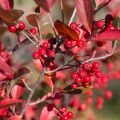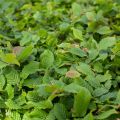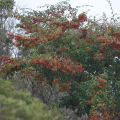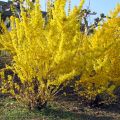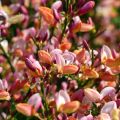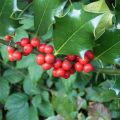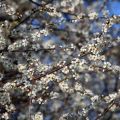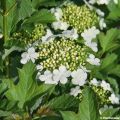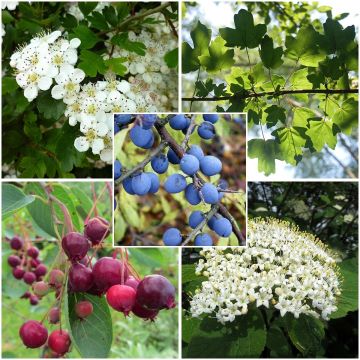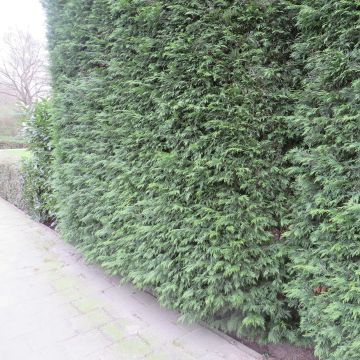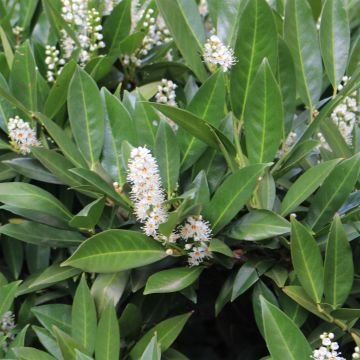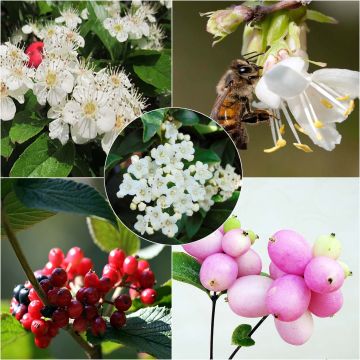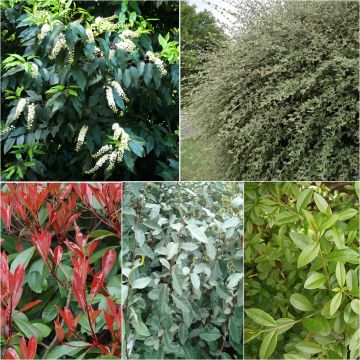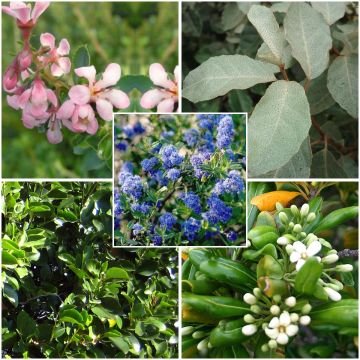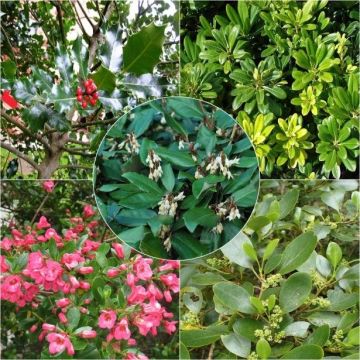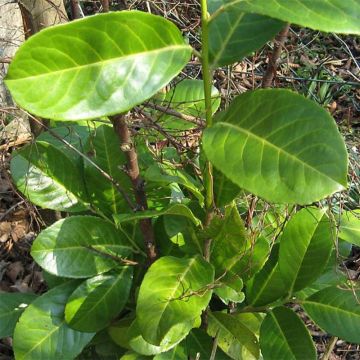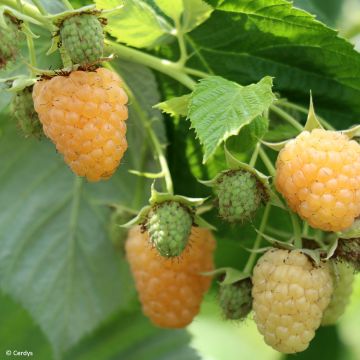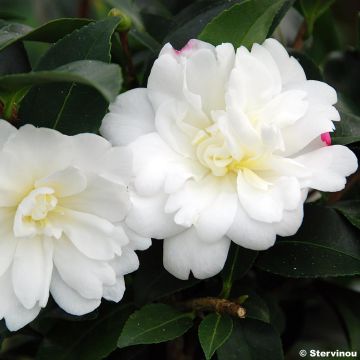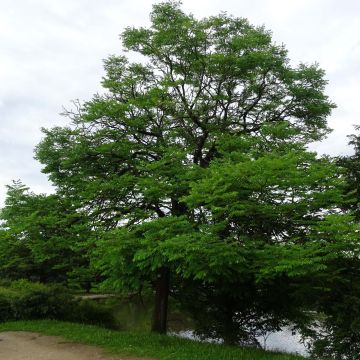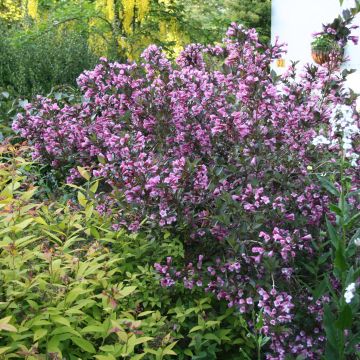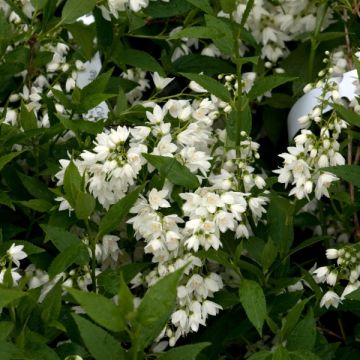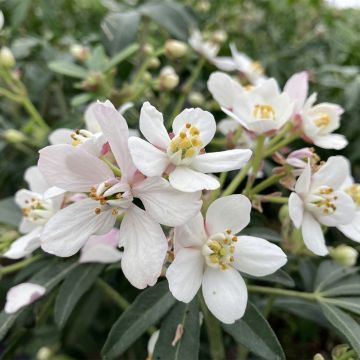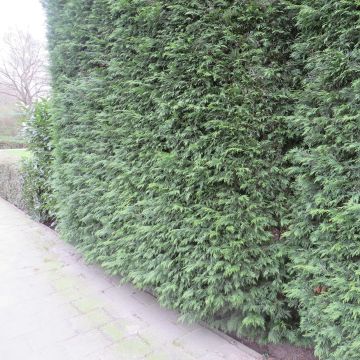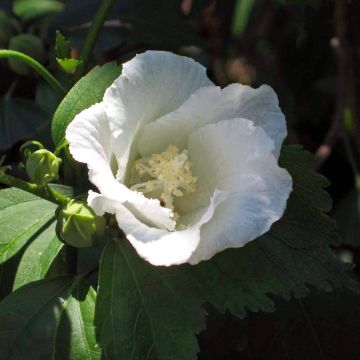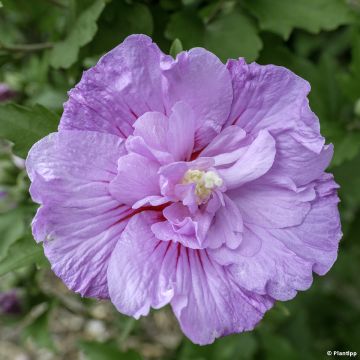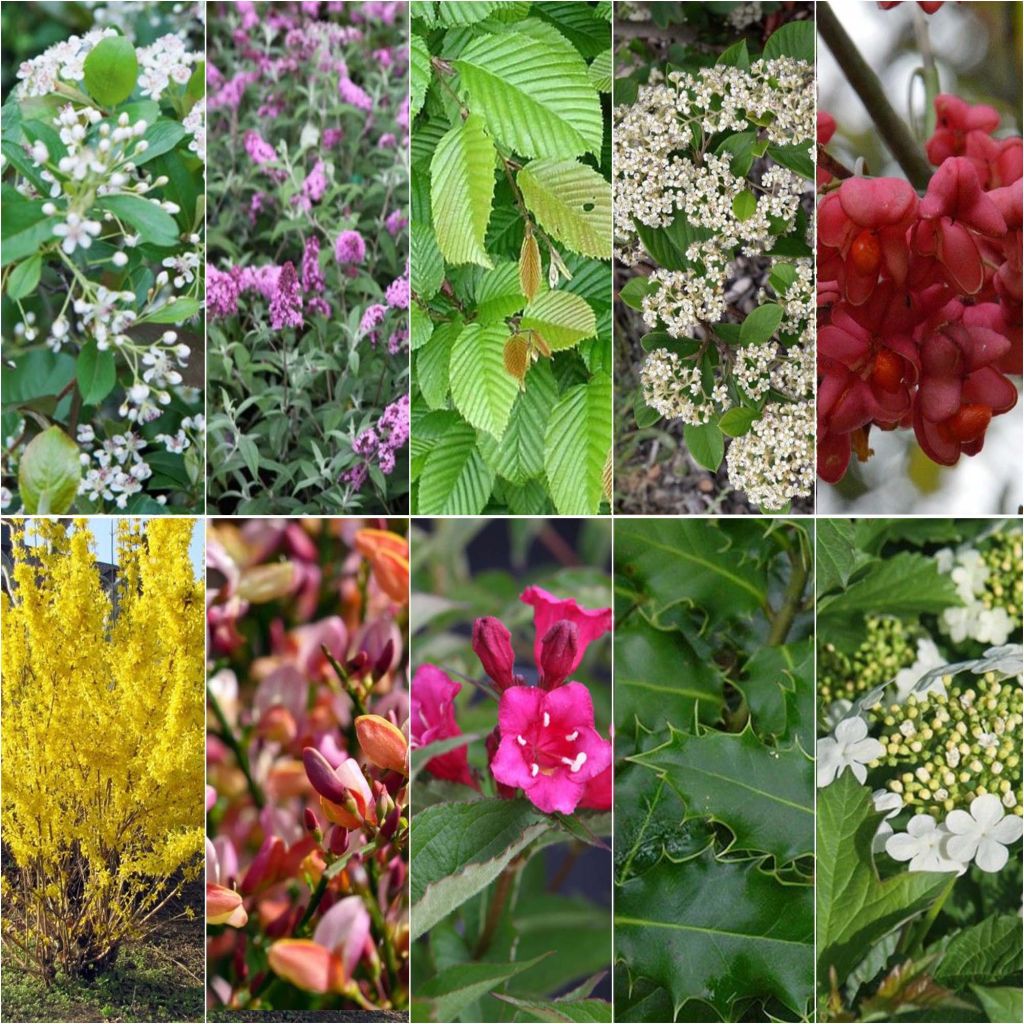

Ecological Countryside Hedge Kit
Ecological Countryside Hedge Kit
This plant carries a 24 months recovery warranty
More information
We guarantee the quality of our plants for a full growing cycle, and will replace at our expense any plant that fails to recover under normal climatic and planting conditions.
From €5.90 for pickup delivery and €6.90 for home delivery
Express home delivery from €8.90.
Does this plant fit my garden?
Set up your Plantfit profile →
Collection items (10 plants)
Description
This is a collection of 10 varieties of plants, easy to grow and maintain, for a natural mixed hedge. They are perfect for quickly creating a changing green screen throughout the seasons, which blends into the landscape while promoting biodiversity in the garden. A kit of 10 plants in pots allows for the creation of approximately 10 metres (33 feet) of countryside hedge.
The collection consists of:
- 1 Aronia arbutifolia Brilliant: approximately 3 metres (10 feet) in height and 2 metres (7 feet) in spread if not pruned. It slightly suckers and has deciduous, ovate, dark green leaves that turn fiery red in autumn before falling. It blooms in May, with clusters of white flowers sometimes tinged with pink, which are attractive to bees. From September to Christmas, it produces bright red fruits with a taste similar to blackcurrants, which can be used to make jam and are enjoyed by birds.
- 1 Buddleia davidii Pink Delight - Butterfly bush: approximately 3 metres (10 feet) in height and 4 metres (13 feet) in spread, fast-growing. It blooms from August to October on gracefully arching branches, with dense and upright clusters of 25 cm (10in) long, fragrant, and vibrant pink flowers. Its long deciduous leaves fall in autumn.
- 1 Carpinus betulus - Common hornbeam: approximately 2.50 metres (8 feet) in height and 2 metres (7 feet) in spread. Its foliage is neither deciduous nor evergreen, but marcescent, remaining on the branches until new spring growth appears. The leaves are dentate and light green, turning yellow-orange in autumn. Female catkins and leaves appear simultaneously in March, while male flowers in pale yellow catkins appear in autumn. The hanging clusters of green fruits turn yellow-brown when mature, in late September.
- 1 Cotoneaster lacteus - Milkflower cotoneaster: approximately 3 metres (10 feet) in all directions if not pruned. It has a relaxed and natural habit, with spring evergreen white and fragrant flowers that are followed by bright red berries that persist throughout winter. The evergreen foliage is decorative even in winter.
- 1 Euonymus europaeus Red Cascade - Spindle tree: approximately 3 metres (10 feet) in height and 2 metres (7 feet) in spread. The weight of its abundant bicoloured fruits, red and bright orange, arches and decorates its branches from late summer through much of winter. The foliage is green and takes on an intense red color with the first cool nights before falling.
- 1 Forsythia intermedia Spectabilis : approximately 2.50 metres (8 feet) in height and 2 metres (7 feet) in spread, fast-growing. It has deciduous foliage that is absent in winter. It is one of the first to bloom at the end of winter, in March-April, and is one of the most floriferous. Its small flowers are a bright yellow and appear along the branches before the leaves.
- 1 Cytisus procumbens Zeelandia - Genista : approximately 1.50 metres (5 feet) in all directions, fast-growing with a relatively short lifespan. The flexible, arched green stems bear small semi-evergreen leaves, which may or may not fall depending on the climate, in winter and summer. It has a massive flowering in May, with lilac, cream, and salmon-coloured flowers.
- 1 Ilex aquifolium - Common holly: approximately 2.50 metres (8 feet) in height and 1.20 metres (4 feet) in spread, which is slow-growing. Its long, flexible stems bear evergreen foliage that is very dense, shiny dark green, with wavy and serrated edges and sharp spines. It blooms in May-June, with small white to pinkish, fragrant flowers. Only female hollies produce characteristic bright red fruits when male hollies are present.
- 1 Prunus spinosa - Blackthorn: approximately 3.50 metres (11 feet) in all directions if not pruned. This large deciduous, thorny shrub or small tree is a familiar sight in our landscapes and impenetrable thickets. It offers a beautiful white flowering in March-April, before the leaves, followed by black, edible fruits called sloes that are sought after by birds.
- 1 Viburnum opulus Compactum - Guelder rose: approximately 2 metres (7 feet) in height and 1.50 metres (5 feet) in spread. This compact variety of the snowball tree has deciduous dark green foliage that turns red in autumn before falling. Its creamy-white flower balls bloom from May to June, followed by beautiful red fruits that are enjoyed by birds.
Plant these bushes preferably in autumn or early spring, in full sun or partial shade, mixing them and spacing them about 1 metre (3 feet) apart. They can thrive in well-prepared garden soil, even if it is chalky, improved with leaf compost to help them establish. Once well-established, they do not require watering in summer.
Tip: Do not prune at the beginning of the season to fully enjoy the flowering! If possible, also avoid pruning at the end of summer to enjoy the fruits and feed the garden birds in winter. Only intervene occasionally to limit the overcrowding of a bush: preferably after flowering.
Report an error about the product description
Plant habit
Flowering
Foliage
Botanical data
Cultivar or hybrid
Other Hedge-growing kits A to Z
Planting and care
Plant this collection in the sun or partial shade, in ordinary but well-prepared soil, enriched with leaf compost, that is rather moist but well-drained. Dig planting holes of 30-40 cm (12-16in) in all directions, thoroughly loosening the bottom and walls with a fork or pickaxe. Maintain a planting distance of 80 cm (32in) to 1 m (3ft) between each bush. Easy to grow and not very demanding, these shrubs only require mulching in summer in dry climates to maintain some moisture, at least during the first summers after planting. Water them abundantly in the first few years in the case of pronounced drought (15-20 litres of water each time), but keep waterings spaced out. You can prune the longest branches to help your shrubs branch out.
Planting period
Intended location
Care
This item has not been reviewed yet - be the first to leave a review about it.
Hedge shrubs
Haven't found what you were looking for?
Hardiness is the lowest winter temperature a plant can endure without suffering serious damage or even dying. However, hardiness is affected by location (a sheltered area, such as a patio), protection (winter cover) and soil type (hardiness is improved by well-drained soil).

Photo Sharing Terms & Conditions
In order to encourage gardeners to interact and share their experiences, Promesse de fleurs offers various media enabling content to be uploaded onto its Site - in particular via the ‘Photo sharing’ module.
The User agrees to refrain from:
- Posting any content that is illegal, prejudicial, insulting, racist, inciteful to hatred, revisionist, contrary to public decency, that infringes on privacy or on the privacy rights of third parties, in particular the publicity rights of persons and goods, intellectual property rights, or the right to privacy.
- Submitting content on behalf of a third party;
- Impersonate the identity of a third party and/or publish any personal information about a third party;
In general, the User undertakes to refrain from any unethical behaviour.
All Content (in particular text, comments, files, images, photos, videos, creative works, etc.), which may be subject to property or intellectual property rights, image or other private rights, shall remain the property of the User, subject to the limited rights granted by the terms of the licence granted by Promesse de fleurs as stated below. Users are at liberty to publish or not to publish such Content on the Site, notably via the ‘Photo Sharing’ facility, and accept that this Content shall be made public and freely accessible, notably on the Internet.
Users further acknowledge, undertake to have ,and guarantee that they hold all necessary rights and permissions to publish such material on the Site, in particular with regard to the legislation in force pertaining to any privacy, property, intellectual property, image, or contractual rights, or rights of any other nature. By publishing such Content on the Site, Users acknowledge accepting full liability as publishers of the Content within the meaning of the law, and grant Promesse de fleurs, free of charge, an inclusive, worldwide licence for the said Content for the entire duration of its publication, including all reproduction, representation, up/downloading, displaying, performing, transmission, and storage rights.
Users also grant permission for their name to be linked to the Content and accept that this link may not always be made available.
By engaging in posting material, Users consent to their Content becoming automatically accessible on the Internet, in particular on other sites and/or blogs and/or web pages of the Promesse de fleurs site, including in particular social pages and the Promesse de fleurs catalogue.
Users may secure the removal of entrusted content free of charge by issuing a simple request via our contact form.
The flowering period indicated on our website applies to countries and regions located in USDA zone 8 (France, the United Kingdom, Ireland, the Netherlands, etc.)
It will vary according to where you live:
- In zones 9 to 10 (Italy, Spain, Greece, etc.), flowering will occur about 2 to 4 weeks earlier.
- In zones 6 to 7 (Germany, Poland, Slovenia, and lower mountainous regions), flowering will be delayed by 2 to 3 weeks.
- In zone 5 (Central Europe, Scandinavia), blooming will be delayed by 3 to 5 weeks.
In temperate climates, pruning of spring-flowering shrubs (forsythia, spireas, etc.) should be done just after flowering.
Pruning of summer-flowering shrubs (Indian Lilac, Perovskia, etc.) can be done in winter or spring.
In cold regions as well as with frost-sensitive plants, avoid pruning too early when severe frosts may still occur.
The planting period indicated on our website applies to countries and regions located in USDA zone 8 (France, United Kingdom, Ireland, Netherlands).
It will vary according to where you live:
- In Mediterranean zones (Marseille, Madrid, Milan, etc.), autumn and winter are the best planting periods.
- In continental zones (Strasbourg, Munich, Vienna, etc.), delay planting by 2 to 3 weeks in spring and bring it forward by 2 to 4 weeks in autumn.
- In mountainous regions (the Alps, Pyrenees, Carpathians, etc.), it is best to plant in late spring (May-June) or late summer (August-September).
The harvesting period indicated on our website applies to countries and regions in USDA zone 8 (France, England, Ireland, the Netherlands).
In colder areas (Scandinavia, Poland, Austria...) fruit and vegetable harvests are likely to be delayed by 3-4 weeks.
In warmer areas (Italy, Spain, Greece, etc.), harvesting will probably take place earlier, depending on weather conditions.
The sowing periods indicated on our website apply to countries and regions within USDA Zone 8 (France, UK, Ireland, Netherlands).
In colder areas (Scandinavia, Poland, Austria...), delay any outdoor sowing by 3-4 weeks, or sow under glass.
In warmer climes (Italy, Spain, Greece, etc.), bring outdoor sowing forward by a few weeks.

































